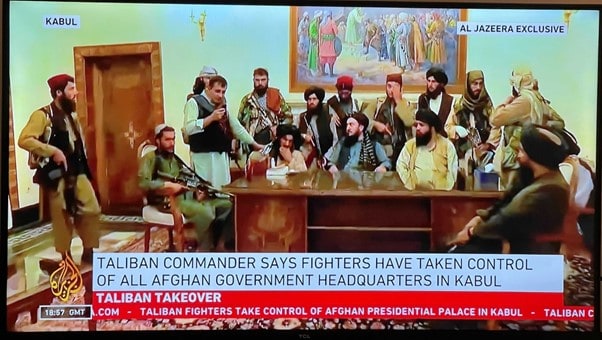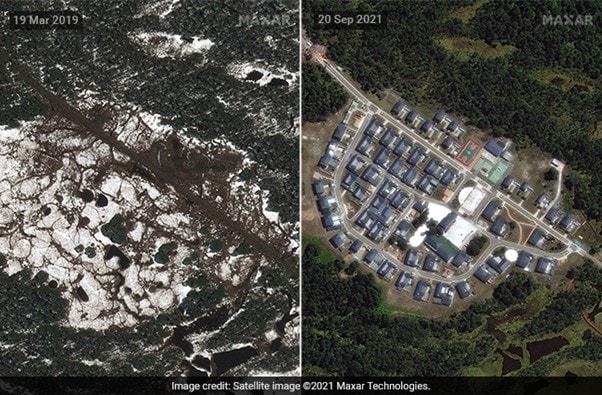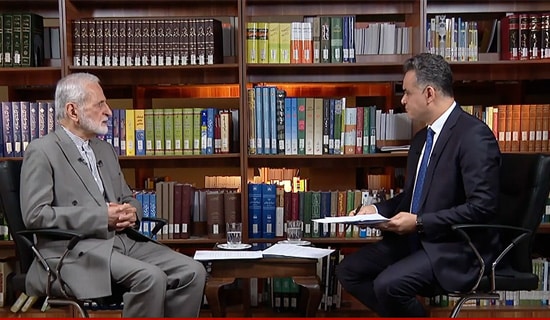Introduction
Since the Islamic Emirate of Afghanistan (the Taliban jihadi organization) seized power in Kabul on August 15, 2021, the regional situation in the wider South Asian region has altered rapidly. There are fears that the Taliban's rise could engender a "regional re-Talibanization" across Afghanistan, Pakistan, Kashmir, and other regions of South Asia, leading to inter-religious conflicts and further attacks on minorities in these countries.[1]
The Islamist forces in the region have been emboldened by the Taliban's rise. On December 3, 2021, in neighboring Pakistan a radicalized Muslim mob in the town of Sialkot in Punjab province lynched Priyanatha Kumara, a Sri Lankan non-Muslim working as a factory manager, accusing him of committing blasphemy against Islam's founder Muhammad.[2]
A few weeks later, across the international border in Indian Punjab, Sikh mobs lynched to death two people in separate incidents in Amritsar and Kapurthala district, accusing them of blaspheming against the Sikh religious books.[3] In other parts of India, minority Muslims have been attacked and lynched in recent years, accused of blaspheming against the cow, an animal that a majority of Hindus revere.[4] Across South Asia, majoritarian lynch mobs are targeting minority communities.
The Intensification Of The Inter-Organizational Struggle For Control
The first impact of the Taliban's rise to power was a new assertion by the Islamic State (ISIS) in Afghanistan. Ideologically, the Taliban and ISIS are the same. The Islamic State approves of the earlier version of the Afghan Taliban led by the founder Mullah Mohammad Omar. It also accepts the earlier version of Al-Qaeda under the leadership of Osama bin Laden. However, ISIS now accuses the Afghan Taliban and Al-Qaeda of diverging from the original manhaj ("methodology") of jihad and therefore deems both jihadi groups to be illegitimate and outside the fold of Islam.
After the Taliban took power, the first major attack by ISIS, in which 13 American soldiers and scores others died, was carried out at the Kabul international airport.[5] Since then, ISIS has been regularly carrying out attacks in Kabul and other provinces of Afghanistan.[6] In coming months, ISIS can be expected to carry out major attacks across Afghanistan.
As far as Al-Qaeda is concerned, the Al-Qaeda leadership has been unsure since the Taliban and the U.S. entered negotiations in 2018 in Doha whether it will continue to find shelter in Afghanistan. However, during secret talks, the Afghan Taliban leadership assured Al-Qaeda leaders that they will continue to remain in Afghanistan while a United Nations Security Council report noted that the Taliban and Al-Qaeda remained in an active relationship during the Doha peace talks with the United States.[7] Zabihullah Mujahid, the spokesman of the Islamic Emirate, has made it abundantly clear that the Taliban cannot severe the relationship with Al-Qaeda or any Islamic organization due to religious reasons.[8]
In the near-future, Al-Qaeda will find a hospitable environment in Afghanistan in which to shelter, to nurse its cadres, and flourish. Also, all jihadi organizations now look to the Afghan Taliban for inspiration. It will not be possible for the Afghan Taliban to rein in the other jihadi groups in Afghanistan, both for ideological reasons and due to the lack of an organizational capacity to do so.
The Intensification Of Inter-Religious Struggle Inside Afghanistan
All Sunni jihadi groups like the Taliban, Al-Qaeda, and ISIS view Shi'ite Muslims as unbelievers and therefore liable to be killed. Although the Islamic Emirate has assured the West and especially Iran that it will protect the Shi'ite minority, the Taliban cadres do not share this view. Consequently, the Taliban cadres attacked many Shi'ites in the countryside and in some areas, notably Daikundi province, and many Shi'ites were forced to leave their homes and migrate.[9]
ISIS has also attacked Shi'ite Muslims in Afghanistan. While the local Taliban cadres use various tactics to force Shi'ite Muslims to migrate, as it helps them wrest control of their homes and land, ISIS too can be expected to continue to attack Shi'ites in Afghanistan, especially to disrupt the relationship between the Islamic Emirate and neighboring Iran. This is also likely to energize anti-Shi'ite groups in Pakistan.
The Rise In The Terrorist Activities Of The Pakistani Taliban
The immediate effect of the Islamic Emirate (the Afghan Taliban jihadi organization) seizing power in Kabul is on the Pakistani Taliban, or Tehreek-e-Taliban Pakistan (TTP). The TTP has intensified attacks in Baluchistan province and the tribal agencies along Pakistan's border with Afghanistan.[10] It hopes to regain influence in the Pakistani border region and force the shari'a agenda on Pakistan's national politics.
The Islamic Emirate's rise to power has energized not only the TTP, but also other pro-Taliban and pro-Al-Qaeda groups such as Tehreek-e-Labbaik Pakistan (TLP), whose members were at the forefront of the lynching of the Sri Lankan national in Sialkot. On December 9, 2021, the TTP, which has declared formally for the first time that it is a branch of the Islamic Emirate, the Afghan Taliban organization,[11] ended a month-long ceasefire between the TTP and the Pakistan government. After the end of the interim ceasefire in December 2021, the TTP has increased its attacks in the border region.[12]

August 15, 2021: Afghan Taliban mujahideen take over the Presidential Palace in Kabul
The TTP and all Al-Qaeda affiliates owe their bay'ah ("oath of allegiance") to the emir of the Islamic Emirate, while the Pakistani Islamic groups such as TLP, Jamaat-e-Islami Pakistan, and Jamiat Ulema-e-Pakistan also view the Afghan Taliban as their ideological cousins. Some of the radical leaders in the region such as Maulana Abdul Aziz of the Red Mosque in Islamabad are uneasy about the Afghan Taliban holding talks with the U.S. and might exert pressure over the Taliban and other jihadi groups.
It is under such pressure from peer groups that the Afghan Taliban can be expected to take a hard stance against the U.S. The Afghan Taliban said recently that if the U.S. deploys 2,000 soldiers at U.S. embassy in Kabul as part of a bilateral pact, they too would deploy 2,000 "fidayeen mujahideen [i.e., suicide bombers]" at the Afghan Embassy in Washington D.C.[13]
SUPPORT OUR WORK

The Intensification Of The Battle Over Kashmir And Hindu-Muslim Tensions In India
ISIS has increased its propaganda in Indian Kashmir and Pakistan, while the Pakistan-backed jihadi groups such as Lashkar-e-Taiba, Hizbul Mujahideen, and the Jaish-e-Muhammad as well as Al-Qaeda in the Indian Subcontinent (AQIS) are at the forefront of the regular terror attacks in Kashmir valley.[14] Pakistani intelligence is expected to continue to use these terror organizations as part of its "bleed India" policy in Kashmir. At the same, there are indications in jihadi chats that the Pakistani military's Inter-Services Intelligence (ISI) has tried to rope some ISIS militants into its framework.[15]
Historically, this is not a good time for India in Kashmir, where the first armed jihad began around 1989 when the Pakistan-backed mujahideen defeated the USSR in Afghanistan. There is now a historical parallel. After the Afghan Taliban's rise to power in 2021, Pakistan again views itself as a victor and will definitely influence the jihadi organizations active in Kashmir.
In December 2021, India's Chief of Defense Staff Gen. Bipin Rawat was killed in a helicopter crash along with more than a dozen others, including senior military officers. While the crash itself does not appear to be connected to terrorism, it has created a sense of instability in India where already Hindu-Muslim and Hindu-Christian conflicts are rising, and the ruling party unwilling to control the radical Hindu groups targeting minority Muslims and Christians. Knowing that the right-wing government in India will not act against them, extremist Hindutva groups – known for their jihad-like Hindutva ideology – attacked Christmas events, smashing the statue of Jesus, at several places across India[16] and took an oath calling for genocide of the minority Indian Muslims at an event in the religious town of Haridwar.[17]

Between March 2019 and February 2021, China built a second village on Indian territory in Arunachal Pradesh
When seen in the context of the uncontrolled Pakistan-backed terror attacks in Kashmir, Hindu-Muslim and Hindu-Christian conflicts, and China's belligerent occupation of Indian territory (both at Galwan atop Kashmir in the West[18] and in Arunachal Pradesh in the east[19] along the 4,057-kilometere border), India's emergence as central to the U.S.'s Asia-Pacific strategy becomes doubtful. India's vulnerability over Kashmir has forced it to strengthen its ties to Russia recently, with India going ahead with a $5 billion deal to purchase S-400 missiles from Russia, thereby undermining U.S. objectives.[20]
Also, as a direct result of the U.S. exit from Afghanistan, China's trade corridor through Pakistan known as China-Pakistan Economic Corridor (CPEC) to the Gwadar port and from there by sea to the Middle East and Africa has gotten a boost – aided by the 25-year $400 billion Iran-China deal.[21] As an unintended consequence, the U.S.'s exit from Afghanistan also instantly removed China's dependence on the Indian Ocean for trade, paving the way for China to emerge in a stronger position while the U.S., Australia, Japan, and India try to form a Quad, a NATO-like counterweight to China.
Conclusion
In the coming years, it will be extremely difficult for the Islamic Emirate to keep control throughout Afghanistan for long. The anti-Taliban resistance is also expected to gather momentum in the spring. Due to the worsening economic and political situation, especially due to the Taliban's refusal to include women and religious minorities in government, a general loss of control and fragmentation in the country can be expected to enhance violence, exacerbated by the seeming disappearance of the Afghan Taliban's emir Mullah Haibatullah Akhundzada, who is yet to be seen in person in Afghanistan.
Amid this general fragmentation, states adversarial to democracy such as Iran, China, and Russia have formed the strongest ties to the Afghan Taliban recently, while anti-U.S. regional players like Turkey and Qatar – moving in to jointly manage five major airports in Afghanistan – are forming an Islamist bloc in an international context.[22] Pakistan has loaned a leading TTP commander Ehsanullah Ehsan to Turkey,[23] while a trilateral strategy between Turkey, Pakistan, and Azerbaijan, having tasted a military victory against Armenia, seems to be targeting Kashmir as its next battleground.[24] The losers appear to be the Western allies, such as Saudi Arabia, the United Arab Emirates, India, and the United States.
* Tufail Ahmad is Senior Fellow at MEMRI.
[1] MEMRI Special Dispatch Series No. 9557, Pakistani Writer Warns Of Regional 'Re-Talibanization,' Says Afghan Taliban's Rise To Power Threatens Pakistani Media, September 20, 2021.
[2] Dawn.com (Pakistan), December 3, 2021.
[3] NDTV.com (India), December 19, 2021.
[4] MuslimMirror.com (India), June 5, 2021.
[5] TheHindu.com (India), August 27, 2021.
[6] MEMRI Inquiry & Analysis Series No. 1595, Exploiting U.S. Withdrawal From Afghanistan, Islamic State-Taliban Fight To Establish Islamic Caliphate To Intensify, August 13, 2021.
[7] MEMRI Daily Brief No. 306, The Afghan Taliban's Goal Is To Establish A Sunni Islamic Theocratic State – They Do Not Believe In Power-Sharing With A Democratically Elected Government – From The MEMRI Archives, August 17, 2021.
[8] MEMRI Special Dispatch Series No. 9449, Afghan Taliban Spokesman Zabihullah Mujahid Declares That Women Are Not Permitted To Sing Or Become President Of Afghanistan, Refuses To Denounce Al-Qaeda: 'The Relation Between Muslims In The World Is In Faith; [To Cut Ties With Al-Qaeda] Is Not Logical At All', July 19, 2021.
[9] HRW.org (U.S.), October 21, 2021.
[10] MEMRI JTTM report Tehreek-e-Taliban Pakistan (TTP) Emir Mufti Noor Wali Mehsud Says His Organization Will Not Surrender Weapons, Vows To Continue Jihad Against Pakistan, December 22, 2021.
[11] MEMRI JTTM report Pakistani Taliban Emir Mufti Noor Wali Mehsud Says TTP Is Branch Of The Islamic Emirate Of Afghanistan, Travels Through Pakistan's Border Regions, December 21, 2021.
[12] MEMRI JTTM report After End Of Interim Ceasefire, Tehreek-e-Taliban Pakistan (TTP) Claims Attacks In Border Region, Killing Several Soldiers And Policemen, December 17, 2021.
[13] MEMRI JTTM report Afghan Taliban Defense Minister Maulvi Mohammad Yaqoob Mujahid: 'If America wants 2,000 English [i.e., American] Troops At Its Embassy In Afghanistan, We Also Want 2,000 Fidayeen Mujahideen [i.e., Suicide Bombers] From The Fateh Force At The Embassy Of Afghanistan In America', December 20, 2021.
[14] MEMRI JTTM report Article In Issue 21 Of ISIS Magazine 'Sawt Al-Hind' Calls Kashmiris To Jihad: 'O Muslims Of Kashmir, For Decades You Have Been Oppressed By These Cow-Worshippers, Your Honor Has Been Violated', October 26, 2021; MEMRI Special Dispatch Series No. 9442, Article In Issue 17 Of ISIS Magazine 'Sawt Al-Hind' Calls India The 'Israel of South Asia,' Says: 'Mushrikeen [Polytheists] Of India Are Included Among The Top Countries With The Most Crimes Against Muslims', July 16, 2021; MEMRI JTTM report Al-Qaeda Affiliate In Kashmir Urges Indian Muslims To Enter Battlefields: 'The Hindu Polytheist Has Taken His Decision And Made His Preparations', January 19, 2021; MEMRI JTTM report Editorial In Issue Two Of Pro-ISIS Urdu-Language Magazine Released In Pakistan Urges Mujahideen To Kill Apostates And Unbelievers, December 17, 2021.
[15] Sometime after 2013, the Pakistani military's Inter-Services Intelligence (ISI) could have been behind Pakistani militants going to join Al-Qaeda and ISIS in Syria as a kind of trial run so that militants from ISIS could be co-opted in future. Though concrete evidence did not emerge, Pakistan's Urdu media did report in 2014 and 2016 that fighters from pro-Pakistani jihadi group "Brigade 313" of Ilyas Kashmiri and other Pakistani militants did go to Syria to work as part of Al-Qaeda and ISIS. See MEMRI JTTM reports Urdu Magazine: Pakistani Group Brigade 313 May Be Fighting Under Al-Qaeda's Banner In Syria, January 14, 2014; and Urdu Daily: 40 Pakistani Youths From Karachi Went To Syria And Afghanistan To Join ISIS And Al-Qaeda, A Dozen Died Fighting There, January 7, 2016. Also, in Afghanistan and Kashmir, fighters often switch from one jihadi group to another, and most ISIS fighters there have origins in Pakistan-based jihadi groups. Reports in jihadi media indicate that Pakistan's Inter-Services Intelligence regularly recruits militants in Kashmir to its own fold. In September 2020, Malaiz Daud, former chief of staff of Afghan President Ashraf Ghani and a research fellow at the Barcelona Center for International Affairs, discussed the emergence of ISIS in the region, noting that in Pakistan and Kashmir, the number of ISIS affiliates is unknown but most of them are former members of Tehreek-e-Taliban Pakistan (TTP), Al-Qaeda, and Jamaatud Dawa (JuD) aka Lashkar-e-Taiba (LeT), while lone wolves are also part of ISIS. Daud also pointed out that that ISIS and the Afghan Taliban's Haqqani Network work together, noting "the similarities between the modus operandi of ISIS in Pakistan and the Haqqani Network" and adding that "the two groups acquired weapons and ammunitions from similar sources, which implies that the ISI keeps ISIS as open option to be utilized for strategic depth in the future." EconomicTimes.com (India), September 30, 2020. MEMRI JTTM Report, Slain Kashmiri Jihadi In Audio Recording: Inter-Services Intelligence (ISI) Of Pakistan Dictates What To Say In Jihadi Videos, November 1, 2018.
[16] TheWire.In (India), December 26, 2021.
[17] TheWire.In (India), December 22, 2021.
[18] TheHindu.com (India), August 31, 2020.
[19] NDTV.com (India), November 18, 2021.
[20] IndianExpress.com (India), November 15, 2021.
[21] MEMRI Special Dispatch Series No. 9274, In Tehran, Chinese Foreign Minister Wang Yi Signs Bilateral 25-Year Comprehensive Cooperation Agreement, Saying: 'China Firmly Supports Iran In Opposing Hegemony And Safeguarding National Sovereignty And Dignity', April 6, 2021.
[22] ToloNews.com (Afghanistan), December 23, 2021.
[23] MEMRI Daily Brief No. 210, Is There A Turkey-Pakistan Deal To Host Pakistani Jihadi Commanders In Turkey?, February 21, 2020.
[24] MEMRI Daily Brief No. 260, Kashmir – The Next Military Objective For Azerbaijan, Turkey, And Pakistan, March 21, 2021




